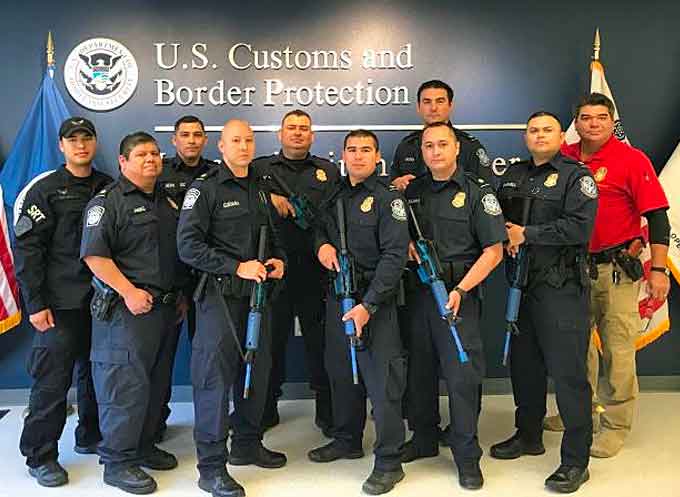
Officers from the U.S. Customs and Border Protection (CBP) Office of Field Operations (OFO) at the Laredo Port of Entry (POE) recently provided an Active Shooter Response Training at the Laredo Training Center.
On Thursday, May 17, 2018, the Use of Force Training Department (UFTD), in conjunction with Laredo Field Office Special Response Team (SRT), provided an Active Shooter Response Training to supervisors from the Laredo Port of Entry.
Recent events demonstrate the need for this type of training as Active Shooter incidents are on the rise.
(A 17-year-old student allegedly opened fire at Santa Fe High School in Texas last week, where at least 10 others were wounded, including a police officer. Courtesy of ABC News and YouTube. Posted on May 19, 2018)
This alarming trend has affected schools, workplaces, and citizen congregations to name a few.
Unfortunately, these events highlight the ever-increasing need to reduce the risk of active shooter incidents while improving preparedness and strengthening ongoing efforts intended to prevent future occurrences and loss.
Scenario-based training is the most preeminent firearms training technique available at any tactical level.
Several emotionally charged scenarios were employed to test and evaluate how participants dealt with rapid information processing and use of force decision making under highly stressful situation.
(See this brief introduction to the Challenges Faced by US CBP Laredo Sector Border Patrol Agents, responsible for securing 171 miles of river border and keeping our communities safe through the deployment of personnel, technology and infrastructure. Courtesy of U.S. Customs and Border Protection and YouTube. Posted on Nov 14, 2017)
The Laredo POE Audio Visual Team (AVT) captured the scenarios, which were then utilized to provide the participants feedback on their performance during the scenarios.
The training gave participants an opportunity to hone their skills in a venue that approaches real world scenarios, improves preparedness, creates efficiency and expertise in response protocols.
Other benefits from this training include increased safety mitigation capabilities to eliminate or reduce the loss of life and property.
The following topics were covered during the three-day training course:
-
Historical and current active shooter events
-
Response to hostage/barricaded active shooter
-
First responder concepts and principles
-
Improvised Explosive Device (IED) awareness
-
Rescue team tactics and responsibilities
-
Approach and breaching of an object and/or building
-
Engaging of suspect(s) scenario based training
-
Post engagement contingencies
















